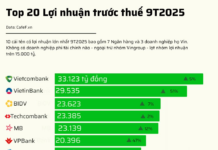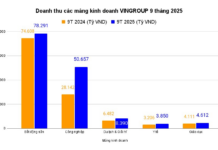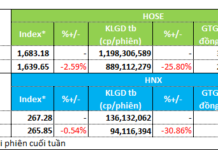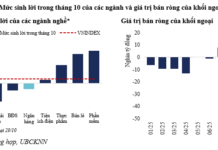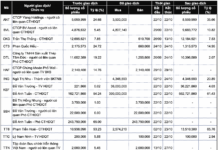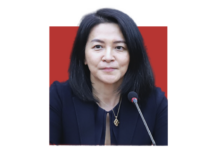The 2024-2025 school year marks the first full implementation of the new general education curriculum across all 12 grades in Vietnam. This year also brings significant changes to the 2025 National High School Graduation Exam. At the beginning of the school year, Minister of Education and Training, Nguyen Kim Son, shared his insights on the key tasks for the education sector in the upcoming year.
Reporter: The 2024-2025 school year marks the final year of the initial implementation phase of the 2018 general education curriculum, and it is also the first time the National High School Graduation Exam will be held under this new curriculum. What are the Ministry of Education and Training’s directives for this important year, Mr. Minister?
Minister Nguyen Kim Son: After four years of gradual implementation by grade and school level, the 2018 general education curriculum will reach its completion in the 2024-2025 school year with the final grades of each level. This year also marks the first time the National High School Graduation Exam will be organized according to a new approach that aligns with the requirements of the renewed general education curriculum.

The journey of reforming general education has faced numerous challenges, but it has also demonstrated the determination and efforts of the entire political system, local governments, and the entire education sector to gradually instill a mindset of innovation among those who implement and benefit from these changes, as well as to convince society of the positive outcomes of this reform.
Recognizing the importance of this school year, the Ministry of Education and Training has been preparing for it since the previous years. For instance, the plan for the National High School Graduation Exam from 2025 onwards has been developed, widely consulted, and received strong consensus from society. Immediately after the plan was issued, the Ministry started preparing for the 2025 exam. The exam regulations are expected to be issued in November 2024, and long-term stability has been considered during the drafting process to benefit students, teachers, schools, and localities.
Additionally, the preparation process for the 2025 National High School Graduation Exam needs to be piloted on a fairly large scale to assess its effectiveness. Therefore, the Departments of Education and Training have prepared for this task and conducted rehearsals to mitigate risks when implementing the official exam.
This year, the Ministry of Education and Training has issued the school year schedule and new academic guidelines for each grade level very early. These documents specifically address each task and what needs to be done, including two critical tasks: effectively directing the implementation of the 2018 general education curriculum for the final grades of each level and preparing the conditions for organizing the 2025 National High School Graduation Exam.
At industry conferences and meetings, such as the Conference of Directors of the Departments of Education and Training, the annual conferences for each grade level, and the annual conference for the entire industry, the work content has been discussed by leaders of the Ministry of Education and Training, representatives of the Departments of Education and Training, and educational institutions. These discussions were held in a spirit of sharing experiences, understanding challenges, and proposing and finding solutions.
Along with providing guidance, the specialized units of the Ministry of Education and Training have been closely monitoring the situation and planning to support and accompany localities in implementing each critical task of the new 2024-2025 school year.
Reporter: The 2024-2025 school year is the first time the National High School Graduation Exam will be held under the 2018 general education curriculum. Could you provide more information on the new features of the university entrance exam next year, Mr. Minister?
Minister Nguyen Kim Son: Along with promoting university autonomy, university entrance exams have undergone several changes that have yielded positive results in recent times. As primary and secondary education reform reaches its final stage, and the National High School Graduation Exam embarks on its first year of implementation under the new approach, adjustments and innovations in the university entrance exam are necessary to align with the overall reforms from primary and secondary education to higher education.
Based on this orientation, the Ministry of Education and Training is currently reviewing and finalizing the draft of the new university entrance exam regulations for 2025. The general spirit of these regulations is to simplify the process and create favorable conditions for students and society while ensuring the quality of the exam and fairness in opportunities for candidates. Universities will continue to have autonomy in admissions but will be required to further enhance their social responsibility.
Reporter: The shortage of teachers remains one of the most significant challenges for localities in implementing the new general education curriculum. In the 2024-2025 school year, what solutions will the Ministry of Education and Training implement to ensure the quantity, quality, and structure of the teaching staff?
Minister Nguyen Kim Son: There are currently about 1.6 million teachers in Vietnam. In the 2023-2024 school year, the sector recruited 19,474 teachers, but the number of students continues to increase, leading to a rise in the number of classes. Compared to the 2022-2023 school year, the number of classes in the 2023-2024 school year increased by 7,198 in secondary schools (equivalent to an increase of 13,676 teachers) and by 1,213 in high schools (equivalent to an increase of 2,729 teachers), resulting in a significant ongoing shortage of teachers in most localities.
According to preliminary reports from localities, the number of teachers lacking in the 2024-2025 school year is expected to increase by 19,856 compared to the previous year (an increase of 6,000 teachers in preschool education and 13,856 teachers in general education). The main reason for this shortage is the continuous increase in the number of students, leading to a higher number of classes. For example, there has been an increase of 2,327 preschool groups and 7,150 general education classes.
The Ministry of Education and Training has directed localities to recruit up to the allocated quotas, place orders for teacher training, and actively organize training programs related to new subjects and teachers of ethnic minority languages…
The Ministry of Education and Training will continue to improve the system of policies and laws to enhance the status of teachers, including the Law on Teachers, which will be submitted to the National Assembly to create a legal framework for issuing policies on benefits, recruitment, employment, management, honor, and rewards… and to empower the education sector in teacher recruitment, transfer, and arrangement.
In coordination with the Ministry of Home Affairs, we will advise competent authorities on the allocation of the remaining quota as per Decision 72 of the Central Committee. We will also urge localities to recruit up to the allocated quota from previous years and request additional allocations. At the same time, we will guide localities, within their competence and specific socio-economic conditions, to implement appropriate support policies for their teaching staff, fostering trust and peace of mind for teachers during their service.
In recent times, preferential policies for teacher training students and changes in basic salaries have positively impacted the choice of studying in the education sector. Many localities have also issued and effectively implemented specific mechanisms and policies to attract and retain teachers. The ongoing development of the Law on Teachers also stems from practical requirements. All these efforts indicate significant progress in addressing the challenges related to the teaching staff.
Reporter: In addition to the shortage of teachers, the lack of infrastructure and classrooms, resulting in overcrowded classes in many schools, is another challenge for localities in implementing the new general education curriculum. What solutions will the Ministry of Education and Training implement in the coming year to address this issue, Mr. Minister?
Minister Nguyen Kim Son: In implementing the comprehensive reform of education and training and the renewal of general education, localities have paid attention to investing in the network of schools and classrooms, as well as educational equipment and facilities.
However, the reality is that the percentage of non-standardized classrooms remains high, with about 15.5% of classrooms nationwide yet to be standardized. There is still a shortage of classrooms in areas with high population density, mountainous regions, remote and difficult-to-reach areas. The rate of provision of educational equipment and facilities according to the prescribed standards is also low, currently meeting only 50.63% of the requirement nationwide…
To achieve the goal of 100% standardized educational institutions by 2030 and overcome the current challenges regarding infrastructure and classrooms, we need significant efforts from localities, including the advisory role of the Departments of Education and Training.
As the 2024-2025 school year will be the preparatory year for the 5-year plan, the Departments of Education and Training need to advise on the development of the 2025-2030 5-year plan to enable localities to proactively invest in education. Additionally, localities should ensure a minimum budget allocation of 20% for the education sector.
Localities should also pay attention to exploiting specific and preferential policies for provinces and cities. Although the level of specificity varies among localities, there are always opportunities to leverage advantageous points to invest in local education development. Many localities have successfully done this, creating resources and momentum for the development of local education.
One of the key objectives that the education sector will focus on in the 2024-2025 school year is the effective utilization of state budget funds and the mobilization of resources for investment in education. We will continue to standardize schools and classrooms, eliminate temporary classrooms, and develop schools and classrooms in areas with rapidly growing populations and high population density. We aim to ensure the provision of minimum educational infrastructure and equipment to serve the implementation of the General Education Curriculum and the efficient management and utilization of educational equipment.
Reporter: As the new school year approaches, do you have any messages for teachers, students, and students across the country, Mr. Minister?
Minister of Education and Training Nguyen Kim Son: As the country’s socio-economic development progresses, the demands and challenges for the education sector also increase. Never before has the education sector been entrusted with such a significant responsibility and honor, along with such great challenges as it faces today. In the past school year, the entire sector made tremendous efforts to overcome numerous difficulties and challenges.
The 2023-2024 school year has come to a successful conclusion, and a new school year is about to begin. On behalf of the leadership of the Ministry of Education and Training, I would like to acknowledge, commend, and express my gratitude for the outstanding efforts of the management staff, teachers, and employees in the sector, as well as our students and pupils, during the past school year.
As the new school year begins, I hope that every manager, teacher, and employee in the sector will continue to strive with new determination, new solutions, and new approaches, promoting the noble traditions of the education sector to advance Vietnamese education and meet the requirements and tasks assigned by the Party and the State. I wish all teachers renewed joy and motivation in their work and contributions. I also wish all students and pupils a new school year filled with creativity and progress.
Reporter: Thank you, Mr. Minister.














